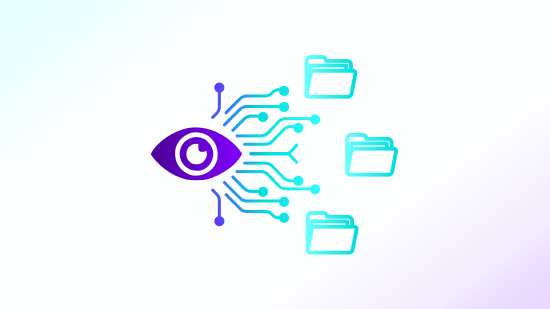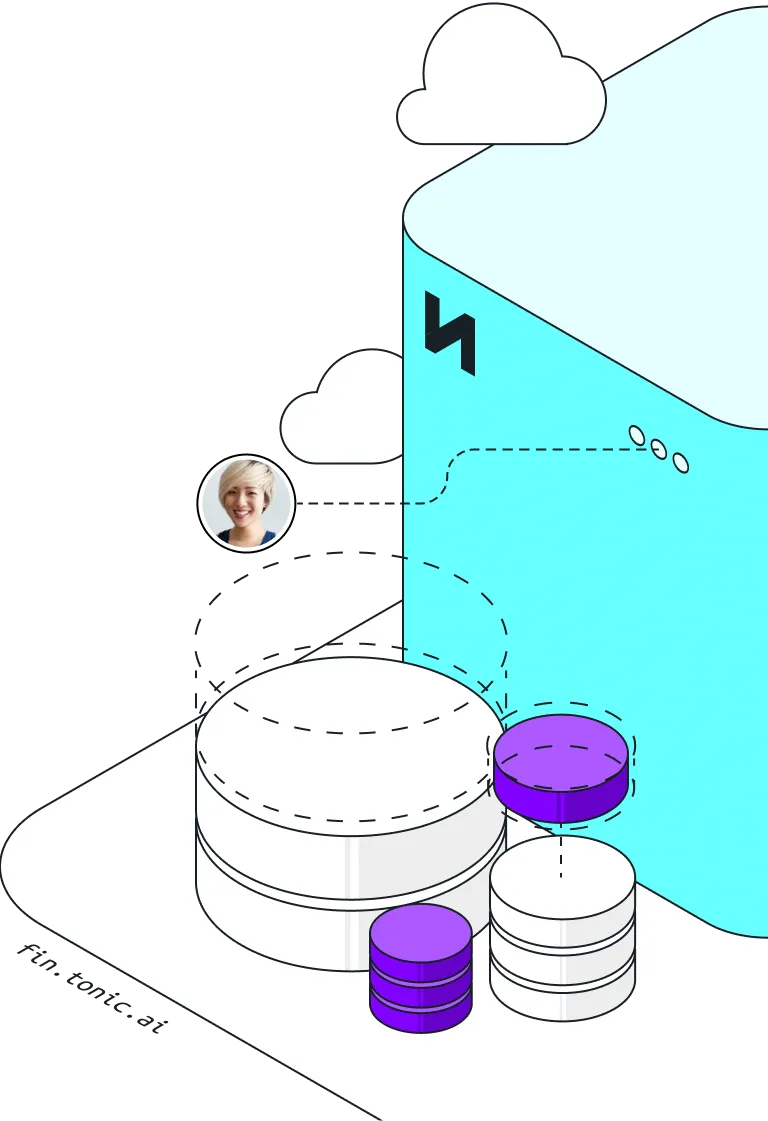
Preventing training data leakage in AI systems

Training data leakage in machine learning, also called target leakage, occurs when information that would not be available at the time of prediction is used during model training. This undermines the model’s ability to generalize and leads to misleading performance metrics.
In this article, you’ll learn:
- Types of training data leakage and real-world examples
- What causes leakage and how to detect it
- How to prevent training data leakage with practical steps and tools
- Why leakage distorts model performance and undermines real-world reliability
- Other types of data leakage and how to manage them
Types of training data leakage
Each type of training data leakage introduces subtle ways your model can gain insight during training that can impede the model’s ability to function properly in the real world. Think of these as leakage vectors: ways unintended information can influence your model’s predictions.
Target leakage
Target leakage happens when features used to train a model include information that would not be available at prediction time. For example, using “discharge status” when predicting hospital readmission creates artificially strong performance but violates temporal logic and privacy norms.
These issues often come from well-meaning, domain-informed feature engineering that lacks visibility into the downstream implications.
Train-test contamination
Train-test contamination occurs when data intended only for evaluation influences model training. This can happen when the test set is included in preprocessing steps like normalization or encoding, causing data leakage that inflates performance metrics. Even a small amount of contamination can distort a model’s reliability in real-world scenarios.
Preprocessing leakage
Preprocessing leakage stems from applying global transformations—such as scaling or imputation—across the full dataset before it’s split into train and test sets. This allows the model to gain information about the distribution of the data it should never see during training. It's a common pitfall in early experimentation where pipeline discipline isn't yet in place.
Improper data splitting
Improper data splitting, especially with time-series or user-session data, introduces leakage by letting the model train on signals that will also appear during evaluation. Random splitting on these kinds of datasets may result in the same user or entity appearing in both the training and test sets, breaking the independence assumption needed for fair validation.
Target leakage example: financial industry
A financial institution is training a model to predict creditworthiness using customer behavior data. One of the features included is “credit utilization,” which reflects how much of a person’s available credit they’re using.
At first glance, it seems like a strong predictor. But in practice, this data is pulled from recent transactions and account histories that include real-time purchases—some of which contain merchant categories or locations that can be tied to sensitive information, like healthcare providers or legal services.
Including this feature not only introduces leakage in machine learning (since it may reflect post-application behavior), but also creates privacy exposure: the model may learn and surface details about user behavior that are not only irrelevant to creditworthiness but also regulated under financial data privacy laws.
Train-test contamination example: e-commerce
An e-commerce team trains a model to predict fraud risk using transaction logs. To streamline the process, the team applies preprocessing to the entire dataset—including logs that belong to flagged fraud cases still under investigation.
When this contaminated data is later included in the test set, the model ends up training on patterns it was supposed to be evaluated against. This compromises data isolation and inflates evaluation metrics, masking the model’s true generalization capability.
What causes training data leakage in AI systems?
Training data leakage often stems from subtle oversights in pipeline design, dataset construction, or feature selection. Here are the most common culprits:
Inclusion of future information: Including data that wouldn’t be available at the moment of prediction, such as outcomes or post-event metrics, gives models an unrealistic advantage and leads to misleading performance metrics.
Inappropriate feature selection: Some features may be technically available during inference but highly correlated with the target in a way that introduces bias or overfitting. These “leaky features” should be flagged and reviewed.
External data contamination: Joining third-party datasets or internal logs without proper filtering or timestamping can accidentally introduce overlap between training and target variables.
Data preprocessing errors: Applying transformations like normalization or encoding before splitting allows test-set knowledge to leak into training. This is especially risky in collaborative environments with shared preprocessing pipelines.
Incorrect cross-validation: Many teams use standard K-fold cross-validation without accounting for temporal or grouped dependencies, which causes future or duplicate data to appear in training sets.
Normalization issues: Calculating global statistics like mean and variance on the full dataset before splitting gives models a sneak peek into the test distribution.
Validation and process drift: Changing evaluation datasets, modifying labeling logic, or switching data sources mid-training introduces hard-to-track inconsistencies that can act like hidden leakage.
How to detect training data leakage
While training data leakage in machine learning is often subtle, it tends to leave fingerprints in your metrics and pipeline logic. Here’s how to spot it before it derails your model.
- Unrealistically high performance: If your model performs exceptionally well early on—especially with minimal tuning—it could be an early sign of leakage.
- High feature-target correlation: Use profiling tools to identify features that are highly predictive. Correlations that seem too good to be true may be due to direct or indirect leakage.
- Careful pipeline review: Manually review your preprocessing, feature engineering, and split logic. Look for any shared steps or inadvertent interactions across train/test boundaries.
- Differential testing: Run ablation studies by removing high-risk features or re-splitting your data under stricter constraints to see if performance drops unexpectedly.
- Audit tools: Use automated tools that inspect pipeline artifacts, monitor lineage, and test for reproducibility to detect leakage patterns at scale.
How to prevent training data leakage
Preventing training data leakage requires layering controls at every step of your machine learning lifecycle. The strategies below build resilient, privacy-first systems.
Proper data splitting
Start by choosing a splitting strategy aligned with your data structure:
- Use time-based splits for temporal data
- Use grouped splits for entities like users or sessions
- Apply splits after all transformations to avoid bleeding information across sets
Include checks to confirm that no identifiers or overlapping records appear in both sets and use hash-based filtering where needed to enforce split integrity. You might even consider adding automated split validation tests to catch edge cases and reduce human error over time.
Careful feature engineering and selection
Audit every feature in your dataset and ask: Would this feature realistically be available at the time of prediction? If the answer is no, remove it. Use domain knowledge, data lineage, and timestamp validation to ensure your model only sees what it would have access to during real-world inference.
If you’re using automated feature generation tools or pulling from feature stores, validate that your temporal joins and labels don’t inadvertently leak future information into your training set.
Rigorous evaluation and monitoring
Choose validation schemes that match your data’s structure. Time-series CV or grouped CV is often more appropriate than vanilla K-fold. Set performance baselines and flag sudden jumps that could indicate leakage.
You can also use data drift tools to monitor for shifts in distribution that might reflect hidden leakage. Regular revalidation with new data helps surface issues that emerge as data pipelines evolve or scale.
Data hygiene checklist
Here’s a quick checklist you can use to verify the most common sources of data leakage:
Other types of training data protection
Not all forms of data leakage affect model performance. Some compromise privacy or regulatory compliance instead. These risks often arise when sensitive or regulated data is accidentally exposed through the training process.
Here are some techniques you can use to prevent this kind of leakage, especially when working with regulated or high-risk datasets.
Privacy-preserving machine learning
Techniques like differential privacy, noise injection, and federated learning help constrain what your model learns about individual inputs. These are particularly useful for regulated environments where user-level privacy is critical.
You can also combine multiple techniques for stronger protection, such as using federated learning alongside synthetic data for highly sensitive domains.
Data redaction
Before training, redact PII and sensitive fields. Tools like Tonic.ai apply context-aware logic to remove identifying information while preserving schema and structure. This makes it easier to train responsibly without manual masking.
Strong redaction will give you benefits beyond compliance as well—it will also simplify downstream governance and accelerate secure data sharing between teams.
Data synthesis
Synthetic data replaces real-world sensitive records with statistically similar alternatives. When generated responsibly, it can reduce the risk of membership inference attacks and data reconstruction..
Tonic.ai generates high-fidelity synthetic data tested for privacy risks and utility, making it a strong addition to your pipeline—but it’s not a standalone solution. Synthetic data should be part of a larger leakage prevention strategy that includes validation, governance, and security.
Pairing synthetic data with access controls and documentation ensures it’s used safely across diverse development teams.
The best data leakage prevention tool
Training data leakage in machine learning is a preventable mistake when you take the time to scrutinize your features and datasets during testing. Other data leakage issues such as protecting privacy are more nuanced—but Tonic.ai gives you an effective, multi-layered solution.
- Synthetic data generation using tools like Textual and Structural to replace sensitive inputs
- Smart redaction that removes PII while keeping data structurally useful
- Governance controls including versioning, reproducibility, and privacy reports
These capabilities help teams build sensitive data leakage resistant pipelines without compromising on agility or data utility. Whether you’re working on LLMs, predictive models, or internal analytics, Tonic.ai supports scalable, compliant development.
Book a demo to see how Tonic.ai can help you prevent training data leakage in your AI workflows.
Chiara Colombi is the Director of Product Marketing at Tonic.ai. As one of the company's earliest employees, she has led its content strategy since day one, overseeing the development of all product-related content and virtual events. With two decades of experience in corporate communications, Chiara's career has consistently focused on content creation and product messaging. Fluent in multiple languages, she brings a global perspective to her work and specializes in translating complex technical concepts into clear and accessible information for her audience. Beyond her role at Tonic.ai, she is a published author of several children's books which have been recognized on Amazon Editors’ “Best of the Year” lists.


.svg)
.svg)





















.svg)


%201.avif)

